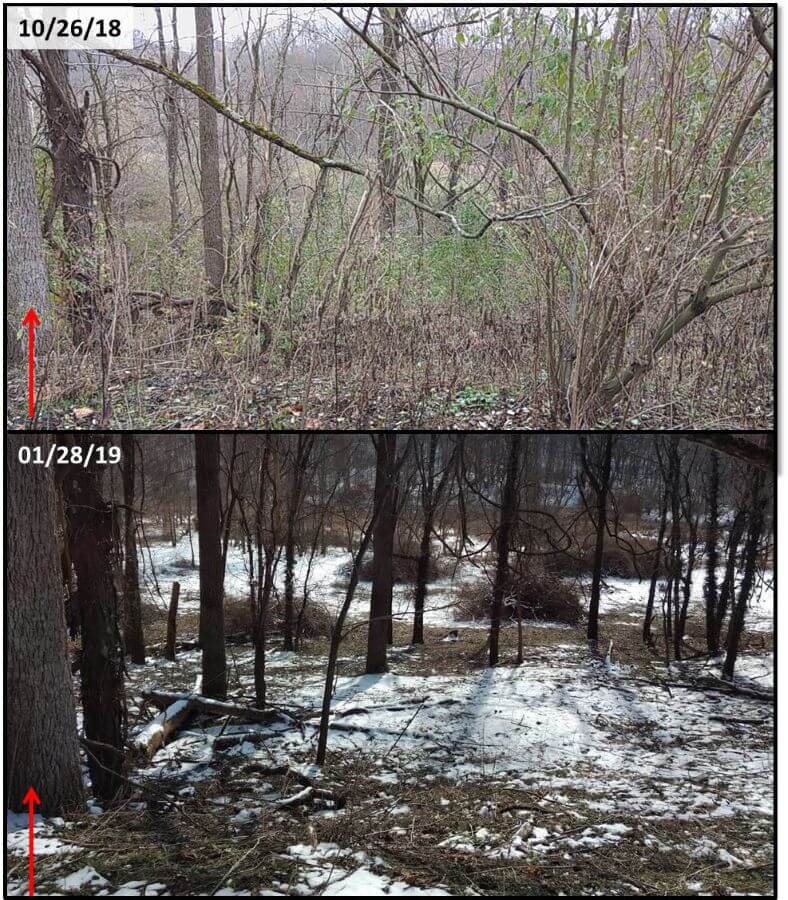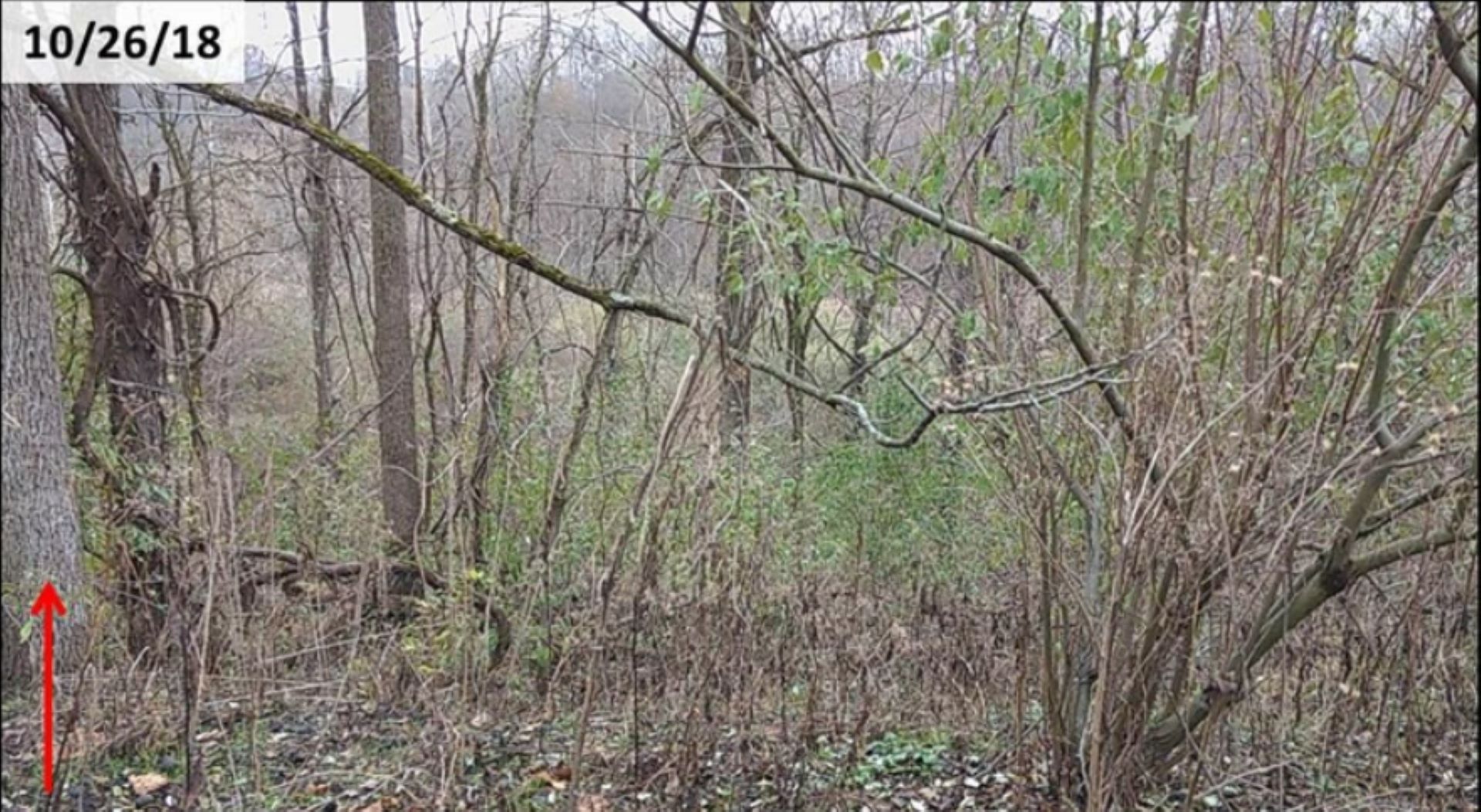A Redditor flexed their muscles in the r/Restoration_Ecology thread by sharing how they eliminated a problematic plant.
The poster needed the help of a heavy-duty saw to take out the invasive autumn olive, but they got the job done, showing a pair of photos taken three months apart.

"I love a good invasive species removal before & after," they wrote. "Chainsaw: 1, Autumn olive: 0."
Autumn olive is a deciduous shrub native to Asia and was used for erosion control by the Soil Conservation Service, according to The Nature Conservancy. It produces cream or yellow flowers and edible fruit.
"Once thought as the best way to control erosion and provide wildlife habitat, it is now a major hassle," The Nature Conservancy stated. "The plant's positive attributes are quickly outweighed by its rapid and uncontrollable spread across forest edges, roadsides, meadows and grassland, where it displaces native plants."
The site noted the plants can grow up to 20 feet tall by 30 feet wide and change the chemistry of the soil, which helps it shade out and outcompete other plants. It can take off even in bad soil, and each autumn olive produces 200,000 seeds annually.
Another problem is its ability to easily germinate, so hand-pulling of seedlings is the recommended route of removal. Cutting or burning the plant can result in an even larger issue, and a severed trunk still requires repeated applications of herbicide from summer through winter.
The work required highlights the need for homeowners, gardeners, and others to lean on native plants, which provide many benefits. Such flora can help you save time and money on lawn maintenance, conserve water, lower your water bills, and create healthier ecosystems for pollinators.
In one year, you can bank $275, and the boon to bats, bees, butterflies, and other wildlife helps keep us fed, as 80% of our food and plant-based industrial products require pollination by animals, according to the U.S. Department of Agriculture.
If you're replacing a grass lawn with native species, it will take an initial investment, but you can still reap the rewards with a smaller-scale makeover or a step-by-step transformation. Options include clover, buffalo grass, and xeriscaping, which some cities will even pay for.
These and other native species are eco-friendly alternatives that don't require the frequent watering and mowing that traditional turf lawns need. They are adapted to the environment and can even mitigate erosion and flooding.
Join our free newsletter for easy tips to save more, waste less, and help yourself while helping the planet.









